
Throughout 2020, social distancing considerably limited our options for entertainment and hobbies. Sheltering-in-place has definitely expanded our appreciation for nature and creative pastimes. It’s no surprise that many people have turned to backyard birding as a free way to relax, get fresh air, and add enjoyment to their days.
Backyard birding is an activity suitable for people of all ages and physical abilities. It is also completely free and can be done anywhere. All you need to do is go outside with the intention of watching the birds. You don’t even need a backyard — a simple window bird feeder is a great way to attract birds into view for you to enjoy.
With some time, a guide book, and a method of tracking, such as a simple notebook, you can get acquainted with the unique characteristics and habits of your local wildlife all year round.
Birdwatching 101: Beginning Your Backyard Birding Adventure
Before you begin your new adventures in backyard birdwatching, it’s important to remember that birdwatching is wildlife appreciation. While this hobby should be fun, it is even more important that it is a pastime based on the preservation of the species. Bird watching should never cause harm or stress to the birds, even in your own backyard. Structures such as decks, gazebos, and porches offer you a perch to observe without disrupting the birds.
Staying still and quiet will also keep the birds calm and relaxed, making it more likely that they will get close to you. Another technique for blending in is to wear camouflage or muted colors — never white — while you are birding.
Birders should always give back more than they take and never leave traces of their presence where they are birdwatching.
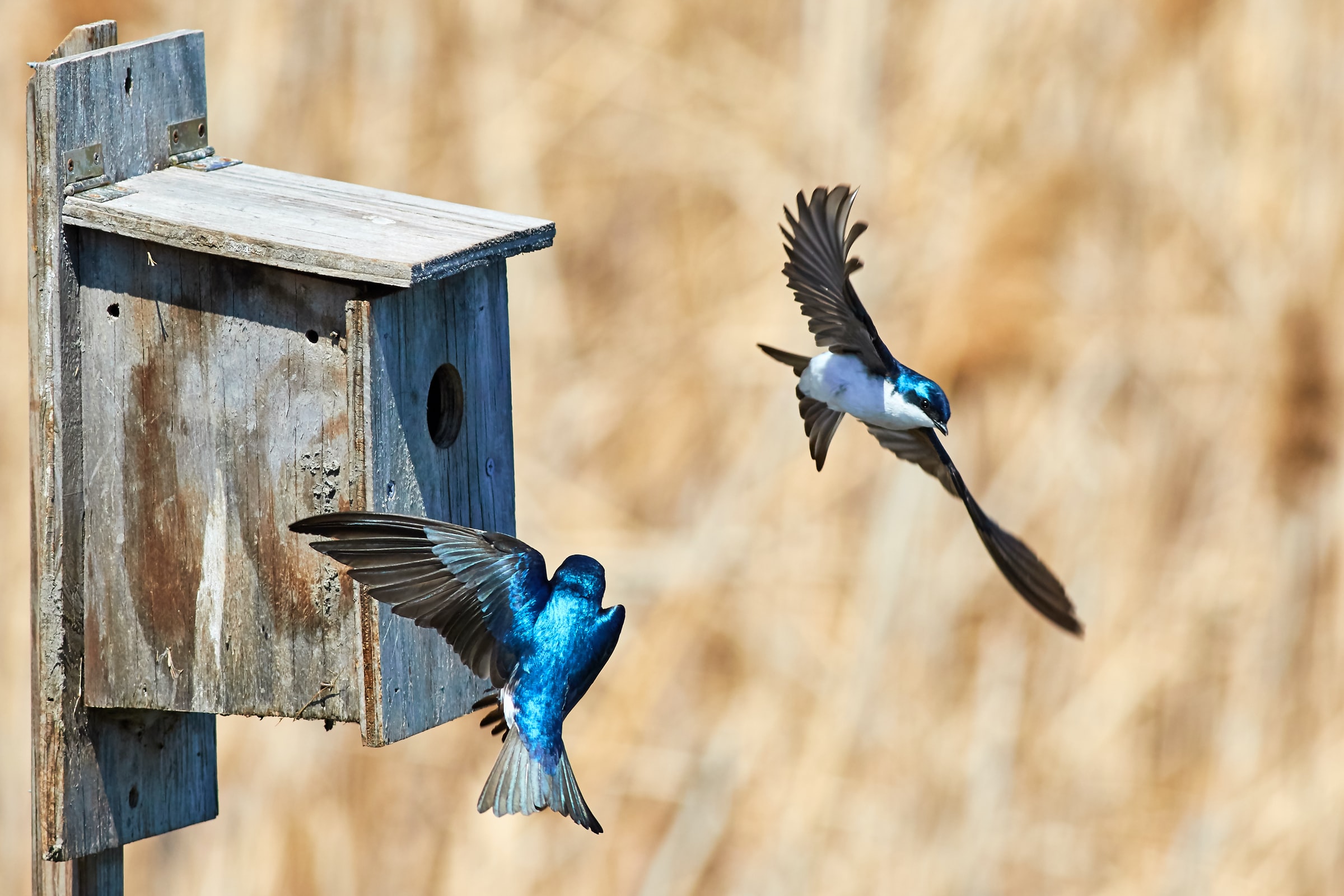
Use a Field Guide to Identify Your New Feathered Friends
Part of the fun and excitement of birding is identifying the birds you are watching. Ornithology, the study of birds, involves observing characteristics of the bird as well as the habitat in order to identify them.
Depending on where you live, you may see up to 200 species of birds in your back yard. Keeping track of what bird you see and when you see it will help you be more in tune with nature and the world around you.
A field guide helps you identify the birds in your back yard. You can use a book that is custom written for the area you live in, with birds and details specific to your region, or use an app. An app may provide helpful extra features such as AI recognitions from a photograph of the bird, samples of the bird’s calls and songs, and records of sightings from other watchers in your area. Audubon.org, Sibleyguides.com, and Merlin.allaboutbirds.org are popular online field guide apps that have a multitude of resources for learning about bird behavior, habitat, and conservation all in one place.
Keep Records of The Birds You Are Watching
Once you identify the bird, it’s important to take notes. By noting the birds you see, when you see them, and their behaviors, you can begin to anticipate migrations or other patterns. Some serious birders keep a list of the birds they have identified over their entire lifetime.
Spotting a bird can happen at any time, so be ready to record what you see. The more birding you do, the more you’ll become tuned in to your surroundings. Simply by practicing birdwatching, you may begin to see things you never noticed before.
The two challenges of birding are: staying patient and quiet enough to see the bird and properly identifying the species. Because of this, birdwatching is a long game that requires time, concentration, and mindfulness.
Birdwatching is not competitive — there is no race to acquire the biggest list of birds. The fun of getting to know your feathered friends is noticing how they are behaving or singing, how that changes over the seasons, and when they come and go from your backyard.
Gearing Up for Birdwatching
We have already established that you do not need any special gear for a satisfying adventure in birding. But it is much more fun when you can see the action up close with binoculars.
Binoculars are easy to bring along with you and give you an up-close and personal look at the birds you’re searching for. Binoculars help you enjoy the beauty of nature while keeping your distance and letting it do its thing.
Like anything else, binoculars range in price and function. The power, field of view, and focus will vary depending on the quality of the binoculars. It’s important that the binoculars are comfortable, easy to hold onto, and that they fit the user’s needs in every way. It’s helpful if you can test them out before buying them. The Audubon Binocular Guide is a great resource for selecting the perfect pair of binoculars.
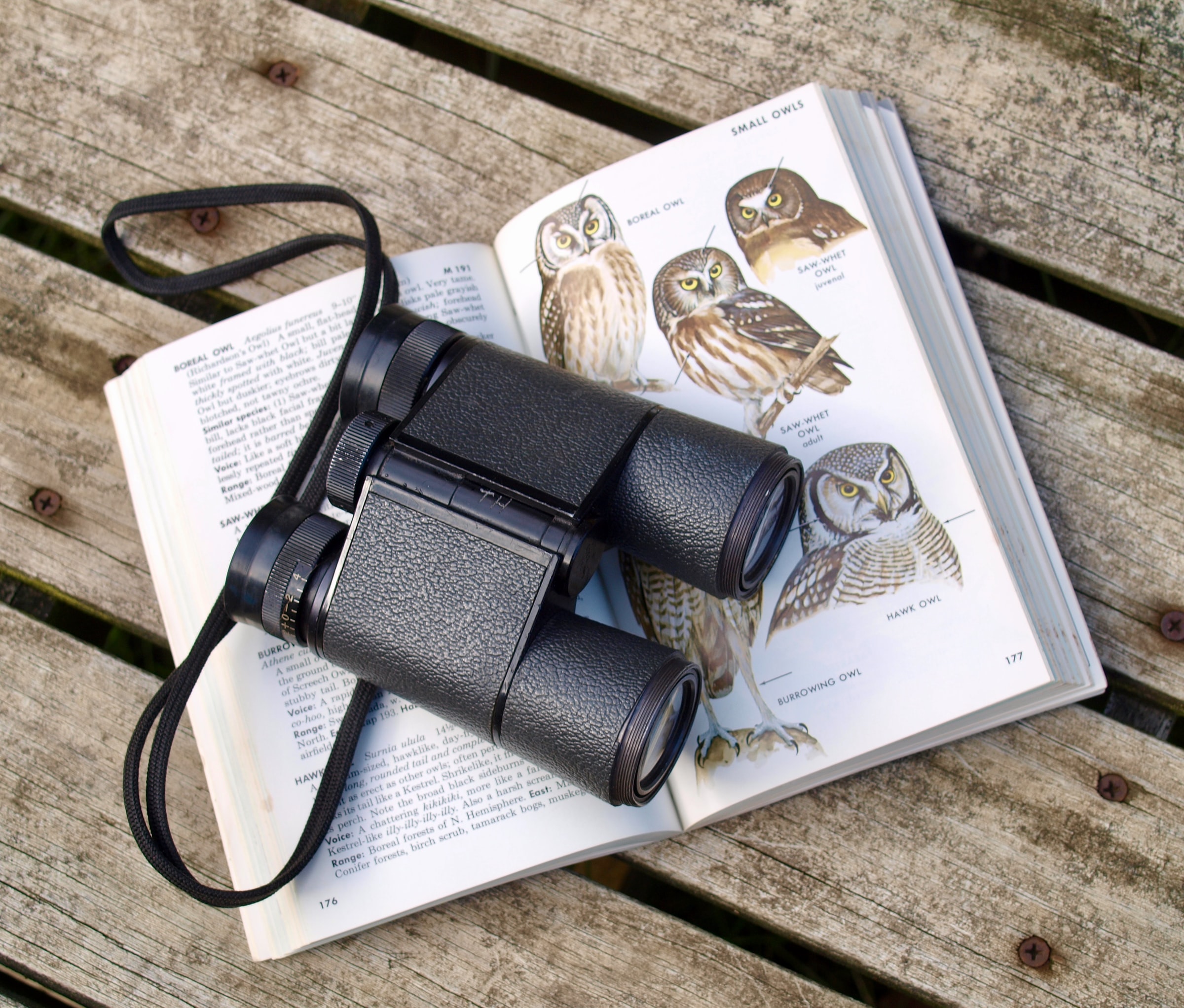
How to Attract More Birds into Your Backyard
One of the best ways to attract native birds to your backyard is to have lots of local native plants and insects available. It makes sense that birds would feel more at home and drawn to the natural habitat they were intended to thrive in.
Installing features like birdbaths, bird feeders, and birdhouses are also great for attracting local birds into your backyard. Be aware of the birds in your area before you choose the style of birdhouse and type of birdseed you’re going to use, though. These treats for your neighborhood flocks are not one-size-fits-all — choose the appropriate types for the birds you want to attract.
A specialty garden or nature supply store will offer the appropriate supplies and may have higher quality products than a big-box retailer. Be sure to research how high up you should mount the feeders and houses. Other mounting details to consider: which direction to face and nearby wildlife to avoid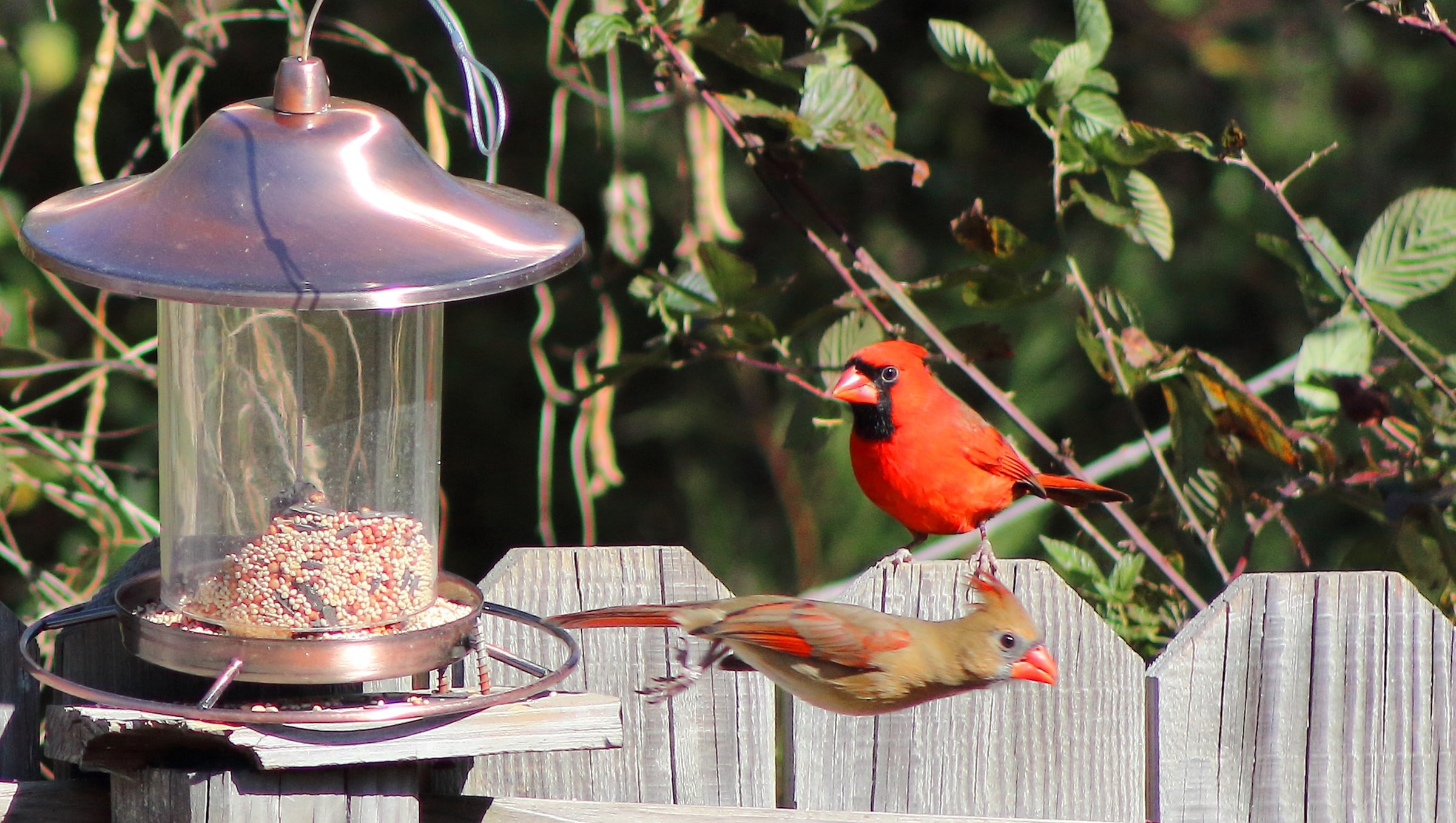
Birdwatching from Home If You Don’t Have a Back Yard
If you don’t have a yard, no problem! You can create a sanctuary from your apartment window that’s appealing for birds to visit. In fact, the higher up you are, the more likely you are to spot migrations of birds of prey like eagles, falcons, and hawks as they pass over your city.
If you are a little closer to the ground, installing a window feeder or a squirrel-proof bird feeder on your balcony could make a pleasant pitstop for the birds in your neighborhood.
How to Build Your Own Birdhouse
You could buy a birdhouse, of course, but building one for yourself isn’t just rewarding — it’s also fun! You can customize it for your space and for your visitors.
The first things you will want to assess are the type of birds you’re making a house for and where you want to install the birdhouse. The type of bird you are housing will determine the style of the house and dictate where you can install it. How large the house is, how big the holes are for entering the house, the depth and height of it, and the material it’s made from are all very important things to consider in order to attract the right bird.
Once you know this information, you can choose the most appropriate place to mount, such as hanging or fixed from a pole or tree. Be sure to consider how the elements will impact the placement of the birdhouse.

Choosing a Free DIY Bird House Plan
If you know the type of bird you want to attract and what style of house you need to build, all that’s left to do is decide what you want to build it out of and how elaborate you want it to be.
You can build a fine birdhouse out of recycled materials, like a shoe tree feeder or a teacup, and have a unique feature in your backyard oasis. This is a fantastic activity to do with the kids — upcycling old items and creating creature homes is a quality afternoon together filled with lessons that will last a lifetime.
Here is a list of 29 free DIY birdhouse blueprints from quirky to quick-up that gives you a great start for creating the birdhouse of your dreams from scratch for a personalized bird town in your own back yard.
Birdwatching is a Hobby for a Lifetime of Enjoying Nature
Learning about the world around you is something you do throughout your entire life. Slowing down and noticing the natural world should be a daily practice. Birdwatching can be enjoyed anywhere, at any time — you don’t even have to go outside. It’s a free hobby that anyone can take part in. Stay safe, de-stress, and learn more about your ecosystem at home with an adventure in birding today.
Via Hermann Samano

With a little imagination and our list of 17 fun patio ideas, you can transform any outdoor space into a vibrant, inviting area that’s perfect for whiling away the summer.
For some, a patio is little more than a convenient space to plonk down a couple of chairs and enjoy a little rest and relaxation on a beautiful sunny day. For others, it’s a blank canvas, presenting an exciting opportunity to get creative, express their individual tastes and explore different design trends.
If you’re in the latter camp, this selection of fun patio ideas for your home is just the thing to spark your creativity.
Whether you’re looking to transform a tired, old space or building something new entirely from scratch, we’ve rounded up the most stylish and innovative ideas to help you create the kind of perfect patio you’ll never want to leave.
1: Create a Stunning Natural Look

Using wooden decking, plants and furniture made from natural materials can turn your patio into a relaxing haven
The materials you choose for creating your patio area makes a major difference to the look and feel of that space.
Opt for stone paving and terracotta planters, for example, and you’ll be well on your way to creating a certain Meditteranean vibe about the place. Go with polished tiles and minimalist furniture, and you’ll have the kind of contemporary aesthetic that the designer magazines love.
If, however, you’re looking to create a natural haven of tranquility in your own back garden, then there’s really only one thing for it:
Using all-natural materials.
Use wooden decking and plenty of greenery. Make use of landscaping timber to build planters and retaining walls, or as the structure for vertical planting.
Think about combining this with natural-look furniture like this gorgeous cedar log loveseat from Lakeland Mills, and what you’re left with is an environment that combines the aesthetic beauty and peaceful ambiance of a remote wilderness with the convenience of being just a few feet away from home.
2: Turn up the Heat With a Fireplace or Fire Pit

An outdoor fireplace like this one creates a stunning focal point for your patio.
Nothing quite beats spending those long, hot summer days relaxing out on the patio, soaking up the sun with a glass of something refreshing in one hand and a good book in the other.
Or perhaps you’re more of a social animal and prefer to the most of the beautiful weather in the company of friends.
Either way, there’s one thing we can all agree on:
Spending time outdoors is decidedly less fun once the night starts drawing in, bringing darkness and cold air with it.
Yet the sun setting doesn’t have to mean it’s time to head indoors.
Outdoor fire pits have become increasingly popular over the last few years, bringing a much-welcomed source of heat to any patio space.
Portable fire pits and fire bowls come in a wide range of designs and materials to blend in with the rest of your outdoor furniture, though if you ask us, there’s something extra special about building a permanent fireplace into your outdoor area.
A fixed-place fireplace like the one in our picture above creates a striking focal point for your patio while at the same time ensuring you get to make the most of your space for longer, no matter how cool the temperature gets.
3: Add Patio Heaters for More Affordable Warmth
OK, there just isn’t room on your patio for an entire fireplace, and although some of those fire pits look impressive, the kind of price tags they come with mean they’re destined to remain on your ‘someday’ list for now.
Does that mean you’re forever destined to head indoors as soon as it gets a little chilly?
Not all.
A good quality standing patio heater can usually be picked up for a few hundred dollars less than a top-end garden fire pit and still provide more than enough warmth once the sun goes down.
As with the fire pits themselves, the best thing about choosing a heater is that you never have to look too far to find one that is built in a style that is perfectly in keeping with the look of your patio.
4: Take Al Fresco Dining to Another Level With a Patio Kitchen

An outdoor kitchen area can really add a whole new sense of fun and excitement to your cooking experiences.
Forget the barbeque, if you’re really going to enjoy cooking outdoors this summer, consider investing in a complete outdoor kitchen.
Space permitting, adding an external cooking can be a wonderful way of making mealtimes much more enjoyable, especially if you’re entertaining guests.
Of course, with the typical cost of an outdoor kitchen ranging from $4,536 – $20,407, this is hardly a small investment, but if you have the budget to play with, it may well be an investment worth making.
Some experts suggest that incorporating even the basics such as stove, countertop and kitchen sink to your patio space can add significant value to your home.
Go all out and build a wood-burning pizza oven, and you’ll really be taking al fresco dining to a whole new level.
Need advice on how to build your own outdoor kitchen? The BBQguys have got you covered.
5: Position Patio Furniture for Perfect Views

The placement of your patio furniture decision makes a big difference to how you enjoy your outdoor space. Consider your surroundings and opt for a position that will provide the best views.
Whether you go all out with a complete outdoor kitchen or simply fire up the grill on those hot summer nights, you’ll eventually need somewhere to sit and eat all that delicious food you’ve prepared.
It goes without saying that choosing the right kind of patio table set to suit your space is an important decision to make, but just as important is where you place that furniture.
If you’ll be using your patio to enjoy a spot of lunch, for example, think about where you’ll be able to enjoy the best views of that beautiful garden you worked so hard to create.
Alternatively, pay attention to where the sun sets and arrange that furniture so that you can sit back, relax, and watch the sun go down of an evening, preferably with a refreshing drink or two.
6: Create the Perfect Ambiance with Umbrella Lights
You’ve got that patio furniture set placed in the perfect position and you’ve even added a patio umbrella to add a little shade on those excessively hot days.
Now there’s just thing missing to really make it the perfect patio:
Lights added to your umbrella.
As we discussed in our guide to the best patio umbrella lights, strand lights, disc lights, and lanterns can all make an attractive addition to your outdoor space while proving to be a welcome source of light on those evenings when your usual outdoor lights aren’t enough.
7: Add Lanterns for a Rustic Vibe

Consider adding a rustic touch by including lanterns to compliment your outdoor patio area.
Speaking of lanterns, you can do much more with them than simply hanging them from your patio umbrella.
Combining vintage design with a timeless style, Larger lanterns with flameless candles or other light sources can add a certain sense of rustic chic to your patio.
Solar-powered models like these charming antique-look lanterns from TomShine frequently prove popular as they require no wiring or external power source.
Simply place them somewhere with lots of direct sunlight during the day, and they’ll soak up that light, converting it into energy to power your lights throughout the evening.
The thing we like best about lanterns is just how versatile they are. They can be hung from nearby trees, placed among your flower beds or planters, or simply positioned on or around your patio furniture.
Since they’re so inexpensive, you may even want to pick up three or four and experiment with an outdoor lighting design that works best for you.
8: Blur the Lines Between Indoor and Outdoor Spaces

Merging indoor and outdoor spaces into one is a popular design trend, and with beautiful results like this, it’s not difficult to see why.
It’s no secret that fusing indoor and outdoor spaces has become one of the biggest trends in architecture and design over recent years.
Rooftop gardens and the aforementioned outdoor kitchen are among some of the most popular options utilized by proponents of the indoor-outdoor trend, but for today, let’s focus purely on the patio.
Think about using the same kind of flooring throughout both spaces. If your patio backs onto your kitchen, for example, then tiles throughout can create a continuous look, making both spaces feel like two parts of a larger whole rather than separate entities.
Glazed sliding doors and additional windows will really enhance this effect and, of course, the kind of decor you choose will make a big difference.
One neat trick to really blur the lines involves the strategic placing of plants at the point where your indoor and outdoor spaces meet.
Bring some of the plants you grow naturally into your garden indoors and place them near the doors, then bring some of your remaining outdoor flora closer to the house to create the impression that one space is merely a continuation of the other.
9: Mix and Match Materials for a Unique Finish

A wooden patio canopy with a stone base creates an interesting talking point as well as serving as a reflection of your individual style.
We talked earlier about how using plenty of landscaping timber and greenery can create a gorgeous natural look, while opting for lots of stone creates a much more contemporary, designer aesthetic.
Yet there’s no reason why you can’t combine both.
As with the rest of your garden, your patio is a place where you can really get creative, fusing different styles and blending contrasting materials together to create a space that is uniquely your own.
Explore different ideas and consider how you can bring your favorites together to reflect your individuality and personality.
10: Create Multiple Patio Areas

With a big enough space, you could create separate patio ‘zones,’ each with their own individual function.
If merging styles is your idea of a designer nightmare, here’s another way that you could use different materials and features in the same space.
If your garden is large enough, you could consider creating multiple ‘zones’ or areas throughout your patio, each serving a different purpose.
Continuing the trend of blurring the lines between indoor and outdoor spaces, a multi-zone patio area is a great way to reflect the layout of your home in your garden.
For example, if there’s one area closest to your property that provides plenty of shade, this might be a good place to add a swing bench or a small patio table and a couple of chairs to create a chill-out spot.
Elsewhere, you could build the kitchen or grilling area, a third area for entertaining, and a fourth whose function is purely decorative, lending a touch of beauty to your space.
11: Create a Sense of Intimacy

A secluded spot like this one really helps to create that “getting away from it all” feeling.
Whether it’s a relaxed dinner or a more lively garden party, your patio can be the perfect place to spend time socializing with friends and family, but let’s be honest:
Sometimes, all you really want to do is get away from it all and unwind.
Carving out a secluded spot on your patio can help with that.
Perhaps you can use plants to create a border around a small area to create your own private hideaway, or adding a welcomed-sense of seclusion with a canopy or gazebo.
Add some soft, comfortable seating, some fairy lights or lanterns for ambiance, and a table for your favorite books, drinks, and snacks, and voila, the peaceful sanctuary you truly deserve.
12: Step it up with a Designer Garden

Adding steps and multiple levels can help you do more with your patio space.
Just because most patios are of the single-level variety doesn’t mean yours has to be.
With a carefully-planned layout, decking, stairs, and even a balcony can add a whole new dimension to your patio design, helping you to maximize even the smallest of spaces.
13: Attract Nature with a Bird Table
You’ve designed your dream patio to serve as a haven of peace and serenity, a place you can escape the hustle and hassle of day-to-day life and enjoy a few quiet moments of quality downtime.
Yet while you may not be so inclined to share that space with other people, there’s nothing to say you can’t enjoy the company of nature’s most beautiful creatures.
Adding a bird table, a feeder, or simply planting bird-friendly plants around your patio can be a great way to attract a whole host of feathered friends to your garden and create that sense of calm relaxation that comes from being at one with nature.
14: Be Bold With Color Choices

Liven up dull furniture with vibrant cushions and accessories to a bright and sunny look to your patio.
Even the most brilliantly designed patios can often be fairly colorless.
As stylish as they may be, those dark-brown rattan patio chairs aren’t exactly cheerful, nor does that oak-stained table really reflect the kind of bright and happy vibe you’re going for.
So switch things up a little.
Ditch the bog-standard beige cushion covers that seem to come with every patio furniture set ever created and swap them for more vibrant options such as in our picture above.
Consider opting for plants and flowers that can add a touch of color, and opt for table clothes and accessories that can help brighten up your lifeless space.
15: Combine Your Patio with a Water Feature
Building a patio as a natural extension to a backyard pool area may be an obvious choice for many people, but for others, it’s simply out of the question.
For some, there simply isn’t the room to go about building a swimming pool and even if there was, the natural climate of their home state means they’d hardly get to use it anyway.
Get a little creative, however, and there’s still plenty of ways that you can combine your patio with some kind of water-based feature to create a stunning talking point.
To create that sense of seclusion and privacy we keep talking about, why not build a garden stream to separate your patio from the rest of your outdoor area? An attractive garden bridge like this one could be used to connect the two areas while dramatically enhancing the design of your garden.
Looking for something a little simpler? Building a pond or pool on the edge of your patio always works well, as does adding a stylish feature like this elegant cascading waterfall feature.
16: Used Planters to Beautify Your Privacy

Adding plants to any surrounding walls helps you maintain privacy while still creating a bright and colorful space.
Whether it forms the boundary of your property or is simply a design feature, a stone wall is a great way to create a sense of privacy and security for your patio area.
However, it can also be pretty bland, and make sitting outdoors feel more like you’re in a prison rather than your own private sanctuary.
This is where planters can really prove invaluable.
As with the example above, a few well-placed plants can transform any boring barrier into a beautiful border, retaining the privacy you while making the whole area feel bright, cheerful, and inviting.
17: Get Creative with Paving

Never underestimate what a big difference some creative paving designs can make to your patio.
Last but no means least, let’s not forget that important yet often underrated feature of good patio design – the paving.
While your creative options for wooden decking may be limited, tiles, using paving stones or similar materials can open up a whole new world of possible ideas.
Waves, curves, and intricate designs like the one in our image above take a little work and ingenuity, but the results are usually highly impressive.
Alternatively, even a basic combination of concrete slabs and gravel can lead to some interesting designs without too much effort.
Top Tips for Designing the Perfect Patio
Anyone of the creative and fun patio ideas above will make a wonderful difference to an existing space, transforming a dull design into something much more vibrant and inviting.
However, if you’re designing a patio from scratch, then there’s a few more essential details you need to keep in mind:
What’s the Purpose of Your Patio?
Creating a relaxing retreat is an obvious priority for many patio owners, but you may have other goals in mind which will likely influence how you put that space together.
If you want to use your garden to increase the value of your property, for example, then adding an outdoor kitchen or even a simple water feature may be top of your to-do list.
If, on the other hand, your main priority is creating a space where you can host the kind of summer garden parties that become the talk of your social circle, then features like seating, lighting, and possibly even outdoor speakers may be more important.
Where will you Place Your Patio?
Position plays an important role in making the most out of your patio.
The most obvious option is to create a space that serves as an extension of your property itself, perhaps with sliding glazed doors to create a sense of the two areas coming together as one.
Yet if you’d enjoy a more scenic view by placing your patio at the other end of the garden, or if sitting directly outside your property means you won’t enjoy as much sunlight, then it pays to consider a different spot.
How Much Will You Need?
A private sanctuary for two naturally requires less space than an alfresco dining area for a family of five, so think carefully about how many square feet you’re likely to need.
Furniture should be taken into consideration here too. Sure, that huge outdoor grill or table set may fit, but if it dominates your patio set, then the whole area may feel cramped and claustrophobic rather than the haven of tranquility you’ve been eager to create for so long.
Via happydiyhome.com
- Wind-combat Frame Systems:Each rib is reinforced with high-density fiberglass ligaments to prevent breakage or rib distortion in strong winds.

- Automatic Open & Close: Simply OPEN or CLOSE the umbrella with a press of a button within one second. Perfect for one handed operation.
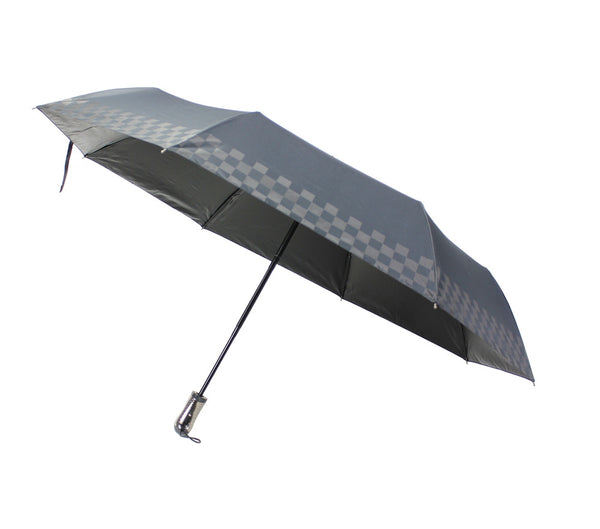
- Keeps You Dry: The umbrella canopy is made from 190T micro-weave fabric that is coated with the industry leading Teflon fabric protection that repels water and dries fast.

-
UV Protection: Vinyl coated polyester on canopy can resist most ultraviolet rays.

-
Potable but don't compromise on practicability: Measures 13.8 inches in closed length, lightweight and easy to toss into a business backpack. Measures 45 inches in coverage arc diameter, big enough for nature's wrath.

-
Emergency Hammer: The umbrella ferrule is made of 800HV chromium alloy which can be used as a window glass breaker or car rescue escape hammer.

- Umbrella Hanger Included: Simply clip on the umbrella to the hanger and just placed it anywhere that's convenient!
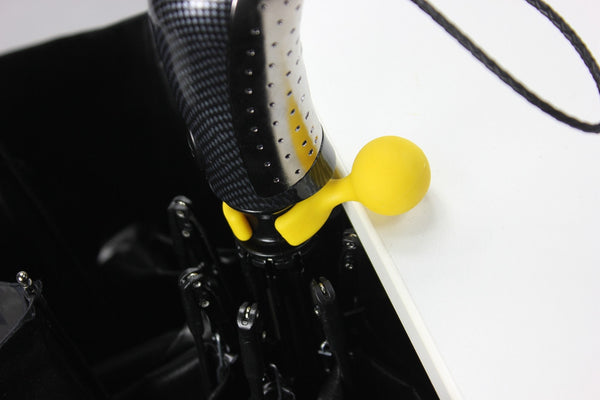
Coverage Arc Diameter: 45 inches
Closed Length: 13.8 inches
Weight: 0.96 lb
Button System: Auto-open & auto-close button system
Shaft Material: Steel
Frame System: Fiberglass reinforced 8-rib frame system
Canopy Fabric: 190 thread-count microweave fabr
This auction features brand new pedometers with bright LED lights. The pedometer has a unique LCD display to count up to 99999 steps automaticlly when you are running. This pedometer has a built in ultra bright 3 LED light; Operation manual: Stick pedometer to strap; Keep the letter on the screen upright; Press “reset” to delete former pedometer record; Begin to use with Zero; Record capacity is 99999; Powered by 3 AG 13 button cell batteries (included) Weight: 37g









